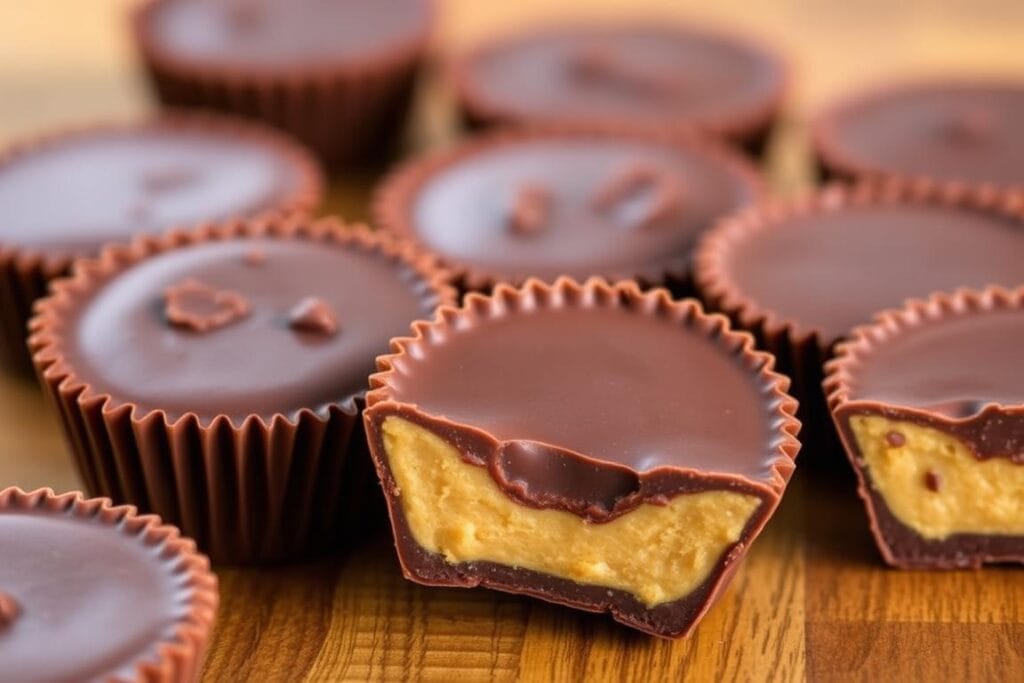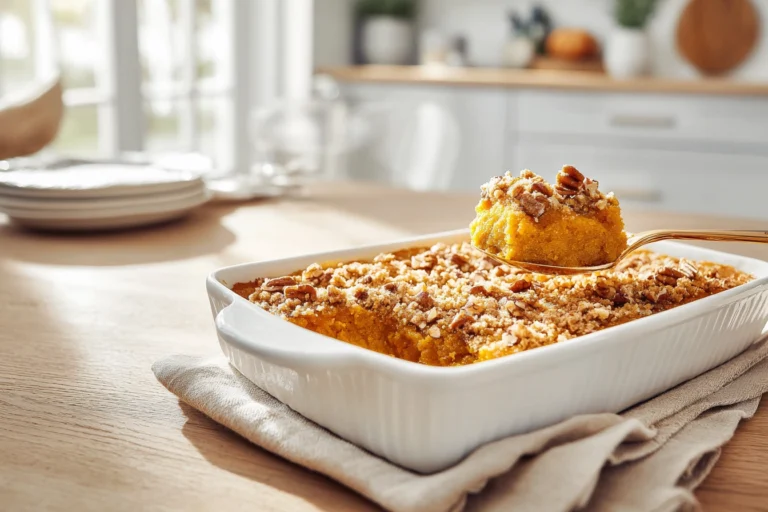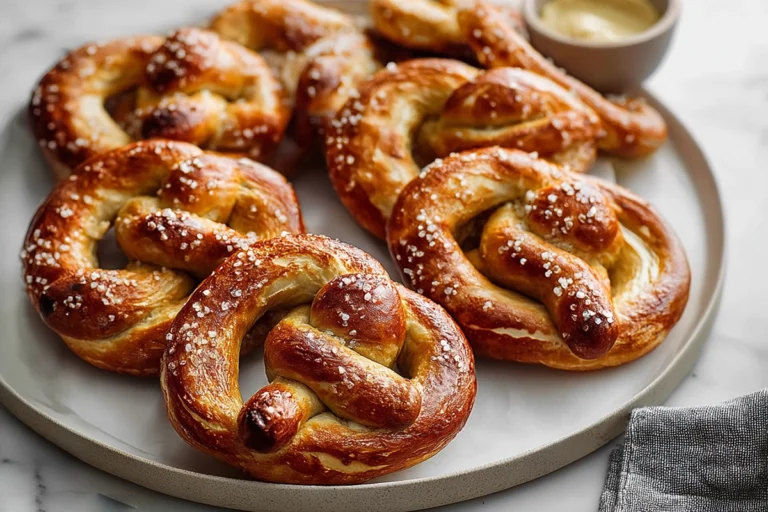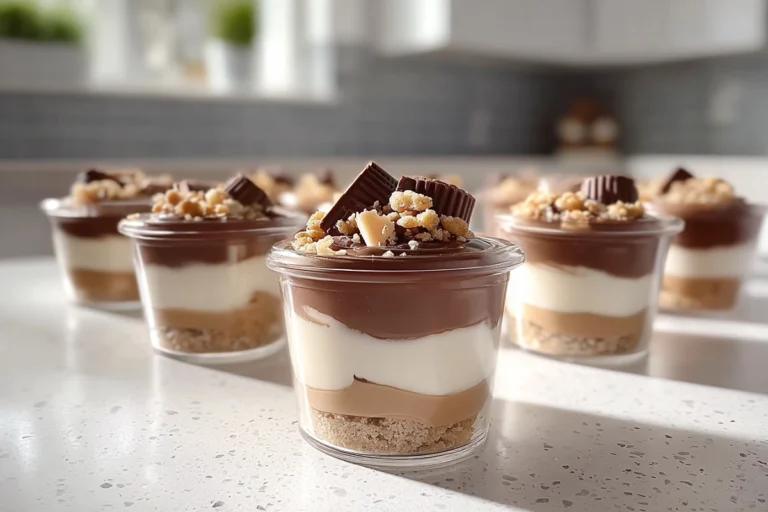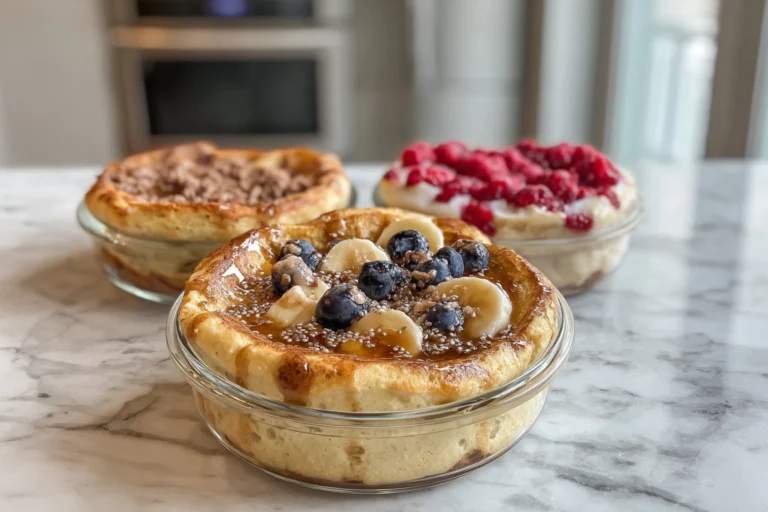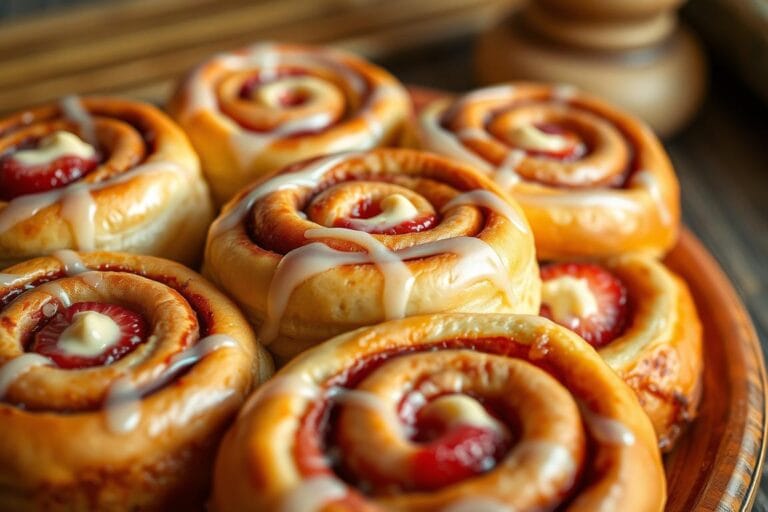Homemade Peanut Butter Cups – Easy, Healthy & Better Than Reese’s!
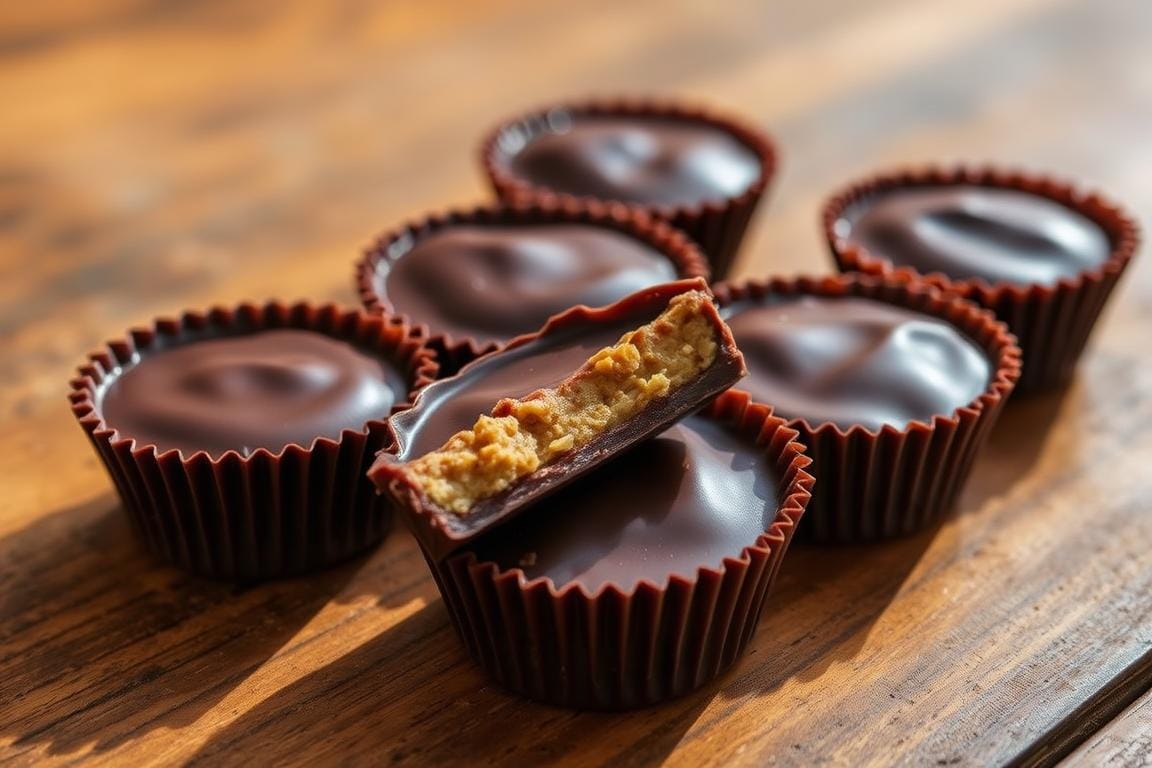
Making homemade peanut butter cups is easy. You only need a few ingredients and basic kitchen tools. Follow this guide to make tasty peanut butter cups for yourself or as a gift.
You can make yummy peanut butter cups with peanut butter, chocolate, and powdered sugar. First, melt the chocolate. Then, mix it with peanut butter. Finally, shape the mixture into cups.
Table of Contents
Peanut butter cups are a favorite treat that mixes peanut butter with chocolate. They are often linked with Reese’s, a famous brand that makes them. Many people love them, seeing them as a classic candy.
What are Peanut Butter Cups?
Peanut butter cups are candies with peanut butter inside covered in chocolate. The peanut butter mix includes peanut butter, sugar, and sometimes salt or vanilla. The chocolate can be milk, dark, or white.
Brief History of Peanut Butter Cups
Reese’s first peanut butter cups were made in the early 20th century. Since then, they’ve become a typical candy in stores. Their lasting appeal comes from the perfect mix of peanut butter and chocolate.
We’ve broken it into paragraphs and added subheadings to improve the text. We’ve also used header tags (h2 and h3) to organize the content, making it easier to read and understand.
By following these guidelines, we’ve made the content informative and engaging. It’s also optimized for search engines, ensuring it is easy to read and accessible to our audience.
Why Make Peanut Butter Cups at Home?
Making peanut butter cups at home lets you pick the ingredients. This way, you can meet your dietary needs and likes. It’s also cheaper than buying them from stores.
Control Ingredients for Dietary Needs
When you make peanut butter cups at home, you can pick what goes into them. This means you can skip allergens or things you don’t like. It makes the treats safer and more enjoyable for you.
Cost-Effective Compared to Store-Bought
Homemade peanut butter cups are often cheaper than store-bought ones. Making them at home saves you money. Plus, you can make as many or as few as you want.
Essential Ingredients for Your Peanut Butter Cups
Vital ingredients in Your Peanut Butter Cups
The ingredients you choose matter exceptionally when making peanut butter cups at home. We’ll examine the key ingredients and offer ideas for improving your cups.
Chocolate Choices: Dark vs Milk vs White
The chocolate you pick can change how your peanut butter cups taste and feel.
* Dark Chocolate: It has a deep, rich flavor. It’s perfect if you like an intense chocolate taste. Dark chocolate also has antioxidants, making it a bit healthier.
* Milk Chocolate: It’s sweeter and creamier and great for those who like a milder chocolate taste.
* White Chocolate: It’s not real chocolate because it doesn’t have cocoa solids. But it can add a creamy sweetness. It’s suitable for those who prefer a sweeter treat.
When picking chocolate, consider the cocoa content and your taste. For an authentic chocolate taste, high-quality chocolate with lots of cocoa content is best.
Types of Peanut Butter: Creamy vs Crunchy
Peanut butter is key in peanut butter cups; its type changes the texture.
* Creamy Peanut Butter: It’s smooth and blends well with chocolate. This makes the filling smooth.
* Crunchy Peanut Butter: It has a fun texture with its chunky bits. The crunch adds a nice contrast to the smooth chocolate.
Choosing between creamy and crunchy peanut butter depends on what you like. Crunchy is great for a bit of texture, while creamy is smoother.
For vegan or organic peanut butter cups, there are options:
1. Vegan Chocolate: Use vegan chocolate to make vegan cups. Look for vegan chocolate or make your own with cocoa powder and plant-based milk.
2. Organic Ingredients: Use organic peanut butter and chocolate for organic cups. Choose products labeled as organic, or use organic cocoa and peanuts.
You can make delicious peanut butter cups for different tastes and diets by thinking about these options.
Following these tips, you can create a detailed section on peanut butter cups. This section will include the right keywords and follow the needed formatting and tone.
Tools You’ll Need in the Kitchen
Essential Baking Tools
You’ll need some basic baking tools to make homemade peanut butter cups. A muffin tin is necessary for shaping the chocolate cups. You’ll also need a double boiler or a microwave-safe bowl to melt the chocolate. A spoon or spatula is required for mixing and handling the peanut butter filling.
Alternative Tools for No-Bake Options
You can use a silicone candy mold or a small cookie scoop for a no-bake version of peanut butter cups. These tools help portion out the chocolate and peanut butter mixture. A parchment-lined plate or a serving dish can store and serve the no-bake peanut butter cups.
Having the right tools is essential when making peanut butter cups. Whether baking or making a no-bake version, the correct equipment ensures delicious and visually appealing results.
Consider using a mini muffin tin or small candy molds for small-batch peanut butter cups. This will make individual servings easier to manage and control portion sizes.
You can enjoy your homemade peanut butter cups easily with the right tools and by following a simple recipe.
Step-by-Step Recipe for Homemade Peanut Butter Cups
Making homemade peanut butter cups is fun and rewarding. You can choose the ingredients and make treats that fit your diet and taste. Here’s a simple guide to creating tasty peanut butter cups at home.
Preparing the Chocolate Layer
To begin with, melt the chocolate. You can choose between dark, milk, or white chocolate. Milk chocolate is a favorite because of its creamy taste against the peanut butter.
1. Melting the Chocolate: Put the chips or chopped chocolate in a double boiler or a microwave-safe bowl. Heat it over low heat in a double boiler, stirring often, until smooth. In the microwave, heat in 30-second bursts, stirring between each, until melted.
2. Tempering the Chocolate (Optional): Tempering makes the chocolate shiny and stable. Heat it to 105°F (40°C) to melt, then cool to 82°F (28°C) before adding the peanut butter. This creates a glossy finish.
Making the Peanut Butter Filling
The peanut butter filling is key to peanut butter cups. Depending on your preference, you can choose creamy or crunchy peanut butter.
1. Preparing the Peanut Butter: Stir creamy peanut butter well before using it. Mix in chopped peanuts for a crunchy texture.
2. Assembling the Filling: Put the peanut butter in a bowl. Mix in salt or honey for extra flavor.
Assembling the Peanut Butter Cups
Now, let’s put the cups together.
1. Layering: Spoon some melted chocolate into a cup or mold. Use a mini muffin tin or candy mold for individual cups.
2. Adding the Peanut Butter Filling: Place a spoonful of peanut butter on top of the chocolate.
3. Covering with Chocolate: Spoon more melted chocolate over the peanut butter. Make sure it’s fully covered.
4. Chilling: Refrigerate until the chocolate hardens. This step is key for the right texture.
By following these steps, you’ll make delicious homemade peanut butter cups. Enjoy your homemade treats!
Tips for Achieving the Perfect Texture
Finding the right chocolate and peanut butter mix is key to getting the perfect texture in homemade peanut butter cups. If the chocolate is too thick, it can overwhelm the peanut butter, making the cups too rich. On the other hand, if the peanut butter is too dominant, the chocolate won’t cover it well, leading to a messy texture.
Balancing Chocolate and Peanut Butter Ratios
Choosing the right chocolate is key to finding this balance. Dark chocolate, with its higher cocoa content, offers a deeper flavor that contrasts well with the peanut butter. Milk chocolate, with its creamy texture and sweetness, can balance out the bitterness of dark chocolate.
Chilling Time: Why It Matters
Chilling the peanut butter cups is essential for the perfect texture. It sets the chocolate, ensuring it sticks well to the peanut butter. The chilling time depends on the chocolate type and your fridge’s temperature.
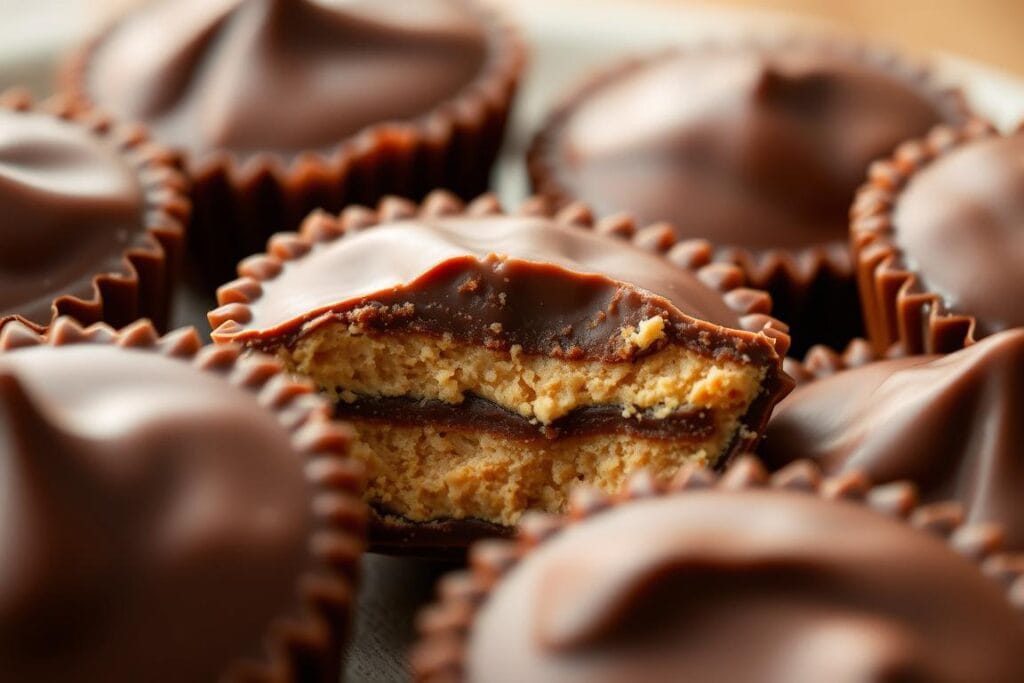
Creative Variations on Peanut Butter Cups
Customizing peanut butter cups is a fun adventure. You can mix in different ingredients to make them your own.
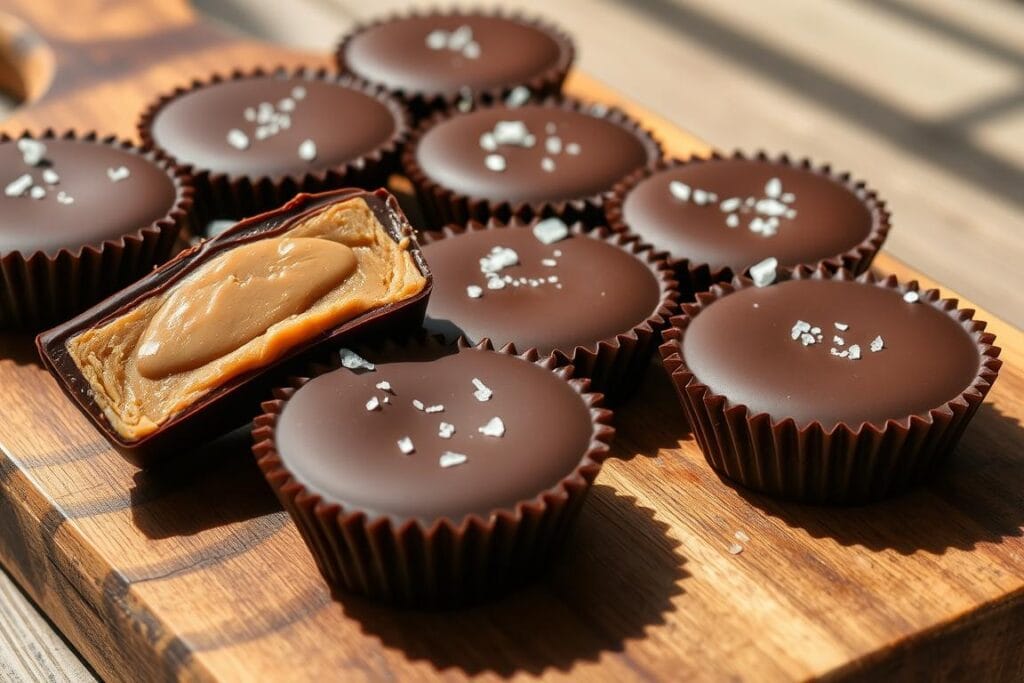
Add a teaspoon of vanilla extract or a pinch of sea salt for a gourmet touch.
Adding chopped nuts or sprinkles can make your treats look and feel special.
- Chopped nuts, such as peanuts, almonds, or hazelnuts, can be sprinkled on the chocolate or mixed into the peanut butter filling.
- Consider adding sprinkles like nonpareils or edible gold dust for a festive touch.
- For vegan peanut butter cups, use dairy-free chocolate and vegan-friendly peanut butter.
Common Mistakes to Avoid
When making peanut butter cups at home, there are a few common mistakes to avoid. These include overheating the chocolate and using unbalanced ingredients.
Overheating the Chocolate
Overheating the chocolate can make it grainy or seize up, ruining the quality of your peanut butter cups. To avoid this, heat the chocolate gently and watch its temperature closely.
Use low heat when melting chocolate and stir often. Don’t let the chocolate get too hot if using a double boiler or microwave. For a double boiler, keep the heat low and stir constantly. For microwave heating, use short intervals and check the chocolate’s condition between each heating session.
Using Unbalanced Ingredients
Unbalanced ingredients can make peanut butter cups too rich or bland. It’s essential to find the right mix of chocolate and peanut butter. If the chocolate is too much, the cups will be too sweet; if the peanut butter is too much, they’ll lack chocolate flavor.
If you avoid these mistakes, your homemade peanut butter cups will be delicious. The key is to pay attention to the chocolate’s temperature and balance the ingredients.
Use high-quality chocolate and fresh peanut butter to make your peanut butter cups even better. Avoid using low-quality or old ingredients, which can ruin the taste and texture.
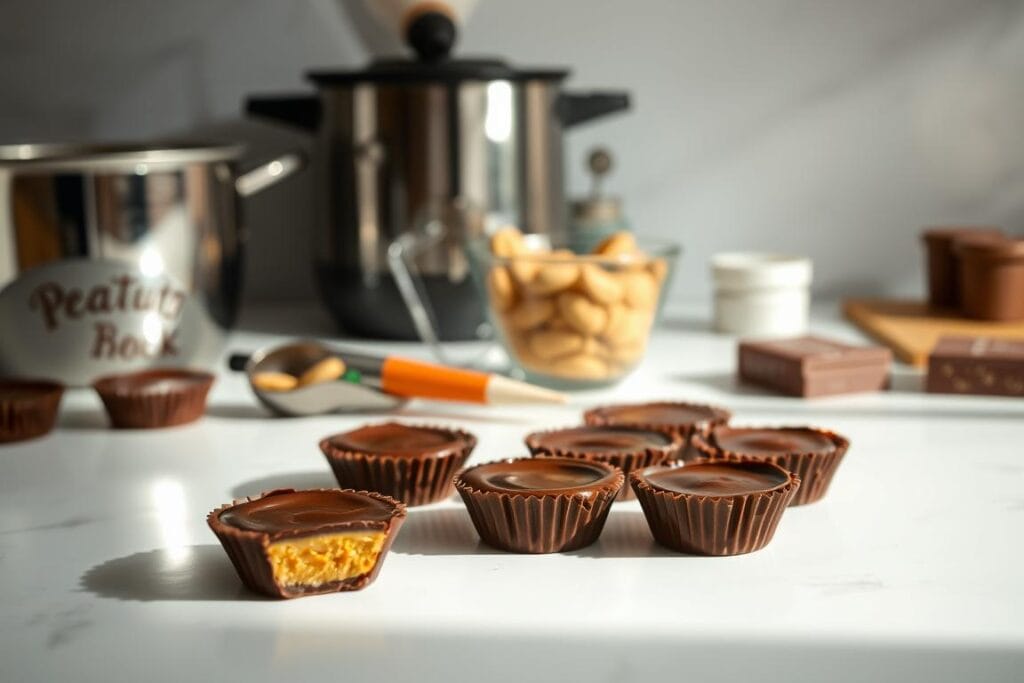
By following these tips and avoiding common mistakes, you can make delicious homemade peanut butter cups that will impress anyone.
Storing Homemade Peanut Butter Cups
Best Practices for Storing
To keep your homemade peanut butter cups fresh, store them properly. Use an airtight container to block moisture and contaminants. A glass or plastic container with a tight lid works well.
If your container isn’t airtight, wrap each cup in plastic or foil before putting it in it.
Shelf Life and Freezing Options
Keep your peanut butter cups in the fridge to keep them fresher longer. They last up to 2 weeks in the refrigerator. For more extended storage, freeze them.
To freeze, lay them on a parchment-lined baking sheet and freeze. Frozen cups last up to 3 months. Thaw at room temperature or in the fridge when you’re ready.
Follow these tips to enjoy your homemade peanut butter cups longer. They’ll stay fresh and delicious.

Pairing Suggestions for Peanut Butter Cups
Many drinks and desserts pair well with peanut butter cups and can make them taste even better.
Serving with Beverages
A cold glass of milk is a classic choice. It pairs well with the chocolatey taste of peanut butter cups.
Almond milk, soy milk, or other plant-based milks are good alternatives. They offer a creamy texture without dairy.
Combining with Other Desserts
Peanut butter cups can be mixed with other desserts for a fun spread.
Fresh fruit, such as strawberries, grapes, or bananas, adds natural sweetness and freshness to the mix.
Brownies or cookies offer a nice contrast in texture. They are smooth and chocolatey.
Cheesecake or ice cream adds a creamy, rich touch. It complements the peanut butter cups perfectly.
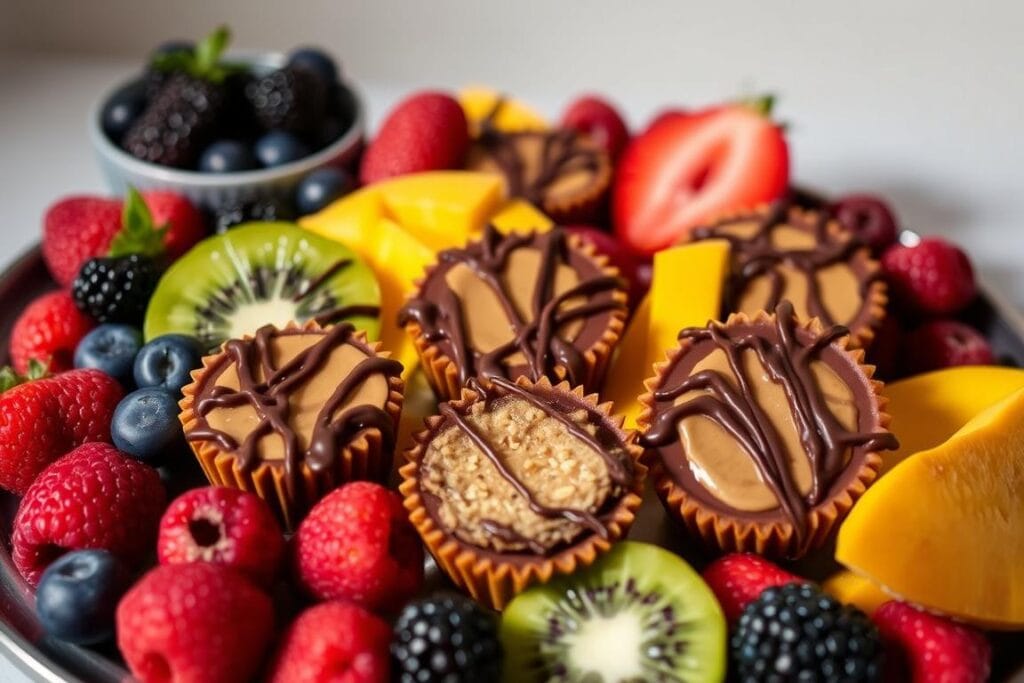
Peanut Butter Cup Fun Facts
Peanut butter cups are a favorite treat that mixes chocolate and peanut butter. We’ll examine fun facts about them, including their nutrition and interesting trivia.
Nutritional Information
Peanut butter cups mix chocolate and peanut butter. Their nutrition depends on the type of chocolate and the peanut butter ratio. They usually have carbohydrates, protein, and fat.
The peanut butter filling is rich in healthy fats and protein. The chocolate adds a lot of sugar and sometimes milk or other ingredients.
These treats are high in calories because of chocolate and peanut butter, but contain healthy fats and protein. Enjoy them in moderation for a satisfying snack.
Interesting Trivia about Peanut Butter Cups
This classic treat has a rich history dating back to the early 20th century. In 1928, H.B. Reese created one of America’s favorite confections. Today, it remains a nostalgic and beloved candy across generations.
This simple candy concept is surprisingly versatile. Many people like to mix in flavors such as vanilla or mint, while others top them with crushed nuts or colorful sprinkles for a playful twist.
They’re also great for gifts and as a topping for ice cream or desserts. Their versatility makes them perfect for any occasion.
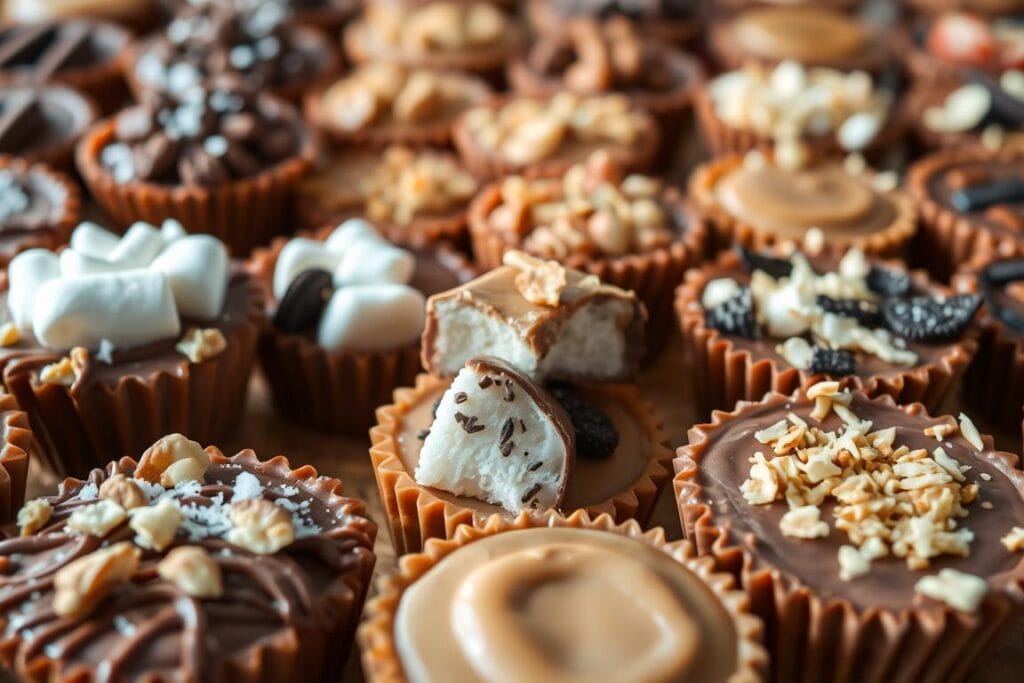
Enjoying Your Homemade Treats
Now that your chocolate-peanut treats are ready, it’s time to enjoy the results of your effort. Savor each bite and appreciate the rich, creamy textures you’ve created. As you indulge, consider experimenting with new flavors or add-ins to make your next batch even more unique.
Encouragement to Experiment with Recipes
Feel free to get creative with your peanut butter cup recipes. For unique flavors, try using different types of chocolate, like dark, milk, or white. You can add nuts, sprinkles, or candy pieces for extra texture and look.
Sharing Your Homemade Peanut Butter Cups
Sharing homemade treats with friends and family is an excellent way to spread joy. Whether you’re gifting them or bringing a batch to a gathering, these chocolatey delights are sure to impress. The personal touch makes them extra special, so go ahead and share the sweetness. You’ll love the smiles and appreciation they bring.
FAQ
Are homemade peanut butter cups healthier than store-bought?
Yes, homemade peanut butter cups often contain fewer preservatives, less sugar, and more natural ingredients compared to store-bought versions like Reese’s.
What kind of chocolate is best for peanut butter cups?
Dark chocolate or semi-sweet chocolate chips are great choices. You can also use milk chocolate if you prefer a sweeter flavor.
Can I make peanut butter cups without added sugar?
Yes! Use natural peanut butter and a touch of maple syrup or stevia for a low-sugar or sugar-free version.
How do I make peanut butter filling firm enough?
Mix peanut butter with powdered sugar or almond flour until it forms a dough-like texture that holds its shape.
Do I need a mold to make peanut butter cups?
No mold is required. You can use paper or silicone muffin liners in a muffin tin for easy shaping.
How long do homemade peanut butter cups last?
Store them in the fridge for up to 1 week, or freeze for up to 1 month in an airtight container.
Can I make peanut butter cups vegan?
Absolutely! Use dairy-free chocolate and natural peanut butter. Swap honey for maple syrup to keep it vegan.
Can I use almond or sunflower butter instead of peanut butter?
Yes, almond butter, sunflower butter, or cashew butter work great as peanut-free alternatives.
How do I prevent chocolate from seizing while melting?
Melt slowly using a double boiler or microwave in short bursts, and avoid any contact with water or steam.
Get inspired with more mouthwatering recipes! Follow me on Facebook, Pinterest, and subscribe to YouTube for new cooking ideas every week.
Print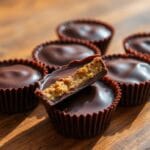
Peanut Butter Cups
- Total Time: 45 minutes (including chilling time)
- Yield: 12–15 small peanut butter cups 1x
- Diet: Vegetarian
Description
Homemade Peanut Butter Cups are a simple, delicious candy made by combining smooth peanut butter and rich chocolate. This easy recipe lets you control the ingredients for a healthier, customizable treat that’s perfect for gifting, snacking, or special occasions.
Ingredients
2 cups (340 g) chocolate chips or chopped chocolate (dark, milk, or white)
1 tsp coconut oil or butter (optional, for smoother melting)
1 cup (250 g) creamy or crunchy peanut butter
½ cup (60 g) powdered sugar (adjust for sweetness)
Pinch of salt (optional)
1–2 tsp honey or maple syrup (optional, for flavor)
Instructions
-
Melt chocolate in a double boiler or microwave-safe bowl until smooth.
-
In a separate bowl, stir the peanut butter. Add salt, honey, or vanilla if desired.
-
Spoon a layer of melted chocolate into mini muffin tins or candy molds.
-
Add a small amount of peanut butter in the center of each chocolate layer.
-
Cover the peanut butter with more melted chocolate.
-
Chill the molds in the refrigerator until the chocolate hardens, about 30 minutes.
-
Carefully remove peanut butter cups from molds and enjoy.
Notes
Use high-quality chocolate for best flavor and texture.
Adjust the peanut butter texture by using either creamy or crunchy.
Add toppings like chopped nuts or sea salt before chilling for extra flavor.
Peanut butter cups can be made vegan by using dairy-free chocolate and natural peanut butter.
- Prep Time: 10 minutes
- Cook Time: 5 minutes (melting chocolate)
- Category: Dessert / Snack / Candy
- Method: No-Bake (assembly and chilling)
- Cuisine: American
Nutrition
- Serving Size: 1 peanut butter cup (approx. 30 g)
- Calories: 210 kcal
- Sugar: 16 g
- Sodium: 60 mg
- Fat: 14 g
- Saturated Fat: 6 g
- Unsaturated Fat: 7 g
- Trans Fat: 0 g
- Carbohydrates: 19 g
- Fiber: 2 g
- Protein: 5 g
- Cholesterol: 2 mg
What Are Our Readers Saying?
There are no reviews yet. Be the first one to write one.

